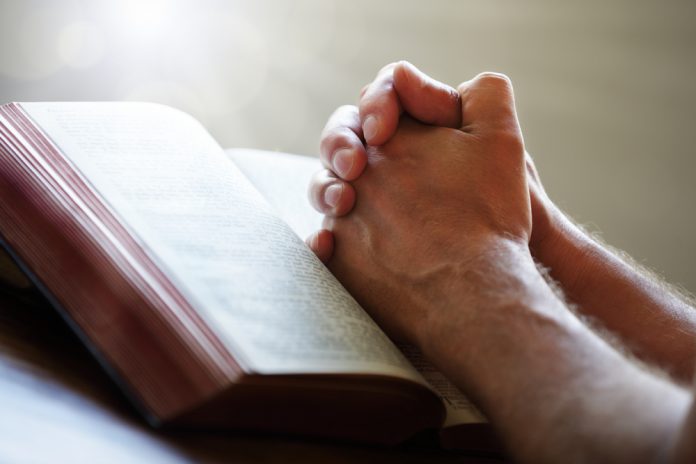
by Kate Ristow
See “Review the Story of Exodus” at the end of this article for an activity that will help you and your students review the story of the Exodus in preparation for your classroom Seder meal.
For a copy of the Classroom Seder Guide, see “The Seder” below.
There is an intrinsic connection between the celebration of the Jewish Passover and the Last Supper in our Catholic Tradition. Jesus was a devout Jew, as were his first disciples. The Gospels of Matthew (26:17-19), Mark (14:12-16), and Luke (22:7-13) all report that after arriving in Jerusalem on the day Christians now celebrate Palm Sunday of the Lord’s Passion, Jesus instructed the disciples to make preparations for the Passover meal they would share together. This meal would be Jesus’ Last Supper, a celebration that has lasting significance for us today because it was during this meal that Jesus instituted the Eucharist.
Recalling, Retelling
Our Jewish ancestors in faith celebrate Passover to recall their redemption from slavery in Egypt. On Holy Thursday and throughout the celebration of the Triduum, we recall that Jesus redeemed us from the slavery of sin and death.
During the Jewish Passover celebration, our Jewish brothers and sisters drink wine and eat unleavened bread. On Holy Thursday we recall that Jesus “took bread, and, after he had given thanks, broke it and said, ‘This is my body that is for you. Do this in remembrance of me.’ In the same way also the cup, after supper, saying, ‘This cup is the new covenant in my blood. Do this, as often as you drink it, in remembrance of me’” (1 Corinthians 11:23-25).
During the Passover celebration, Jews retell the story of the Exodus, when the Israelites were led out of Egypt to freedom. As part of the meal, a lamb bone is used to represent the lamb God commanded the Israelites to slaughter and to mark their doorways with its blood. When Catholics gather to celebrate the Eucharist, we acknowledge that Jesus is the Lamb of God who takes away our sins. At Holy Thursday and Easter Vigil services, Catholics, too, proclaim the Exodus story. Like our Jewish brothers and sisters, we give thanks that the angel of death passed over the homes of the Israelites. As Catholics, we praise God that Jesus passed over from death to new life and pray that we, too, may one day share that new life.
History of the Seder
The focus of Passover celebrations in Jewish homes is a ritual meal called a Seder. The word seder means “order” or “arrangement.” Rabbinical scholars tell us that the Seder has evolved over the years. By this they mean that different actions, readings, and prayers have changed through the centuries.
For example, the actual Exodus took place over 3,000 years ago, and it is likely that the first Passover meal was celebrated in the desert as the Israelites journeyed toward the Promised Land. However, that desert meal, or even the meal that Jesus and his disciples shared, probably bears little resemblance to Seder celebrations of our time. In fact, the first evidence of the formal outline for a Seder can be traced to 70 ad, about 40 years after Jesus’ death and Resurrection.
The Seder was further developed in medieval times, yet scholars believe that the wording and sequence of aspects of the Seder differed from community to community. Each community, under the supervision of the rabbi, developed its own Haggadah, which means “guide” or “script.” What do seem to be fairly consistent are the four questions that are at the heart of the ritual.
Respect for the Tradition
For our Jewish brothers and sisters, the Seder is a sacred ritual. It would be disrespectful to Jews for us to “Christianize” the Seder in order to focus on what happened at the Last Supper and the Eucharist. The purpose is to recall the Exodus story with our students and honor its part in our story of faith. There are countless “Christian Seders” available online if you choose to go that route.
The ritual on these pages is intended to help students understand what happens at a Seder and to participate in an important tradition in the lives of our Jewish brothers and sisters. Keep in mind that it is adapted and condensed for use in your classroom during a normal session.
For example, four cups of wine are ordinarily consumed during a Seder; in this version, students will sip from a cup of juice twice. In a traditional Seder, there are two ritual hand-washings; here there is only one.
There are other differences but, hopefully, the integrity and spirit of the celebration have been maintained and will enable your students to enter respectfully into the experience.
Preparations
* Cover a large table with a cloth. Be sure the table is large enough for all class members to sit around. Place a small pillow on each chair.
* Arrange the following items on a large plate: a lamb shankbone; a hard-boiled egg (on a separate plate, place slices of hard-boiled eggs, enough for each student to have one slice); a bowl of chopped horseradish; a bowl of parsley sprigs; a bowl containing a mixture of apples, nuts, cinnamon, and grape juice (called charoses—ha-ROW-seez). Place this plate on the table. Caution: Eliminate the nuts if there are students with allergies.
* Also on the table place the following: two unlit candles; a plate on which you have placed a piece of matzoh for each student (you may need more than one plate depending on the size of the group); one or more glasses half-filled with salted water; place setting of one plate and one cup for each participant. Fill each cup with grape juice.
* Place a bowl of water and a hand towel on the table as well, near the head of the table.
* Ask for five volunteers: the narrator and four readers. You serve as Leader.
* Make copies of Psalm 135:1, 5-9, 21. Put a copy at each place setting.
The Seder
Tell students that Jewish people celebrate Passover each year with a sacred meal called a Seder. Remind them that Jesus was a devout Jew. Help them recall that on the night before he died, Jesus gathered with his disciples to celebrate Passover. Tell your students that they will have the opportunity to participate in a modern-day Seder in this session.
For your convenience, you have permission to make copies of the Classroom Seder Guide to use with your students during your classroom Seder [CLICK HERE].
Kate Ristow, Contributing Editor to CATECHIST, has worked in Catholic publishing for over 25 years as a national speaker and writer, building on a wealth of experience in the religious formation of children and catechists in both parish and Catholic school programs.
Review the Story of Exodus—Make a Seder Tablecloth
Materials: You will need Bibles, a new white bed sheet (large enough to serve as a tablecloth for the table where you will gather for your Seder), and several sets of fabric markers.
Procedure: A few weeks before your classroom Seder, have students work in small groups to decorate the tablecloth (bed sheet) you will use for the ritual meal. Explain that a Seder celebrates the story of the Jewish Exodus—the freeing of the Jewish slaves in Egypt. Page through Exodus chapters 7-15 with the class and have each group choose passages they will illustrate on the tablecloth. For example, one group might draw Moses before Pharaoh; another group might depict one or more of the plagues.
Spread the tablecloth on the floor so students have ample room to work. When the students have finished decorating their portion of the tablecloth with the part of the story they are illustrating, have them explain their drawing to the class and tell how it relates to the Exodus story.
Copyright 2014, Bayard, Inc. All rights reserved. This article is protected by United States copyright and other intellectual property laws and may not be reproduced, rewritten, distributed, redisseminated, transmitted, displayed, published or broadcast, directly or indirectly, in any medium without the prior written permission of Bayard, Inc.
This article was written by the Catechist Staff and appeared in Catechist magazine, May 2014.
Image Credit: Brian A Jackson/Shutter Stock 145450387




